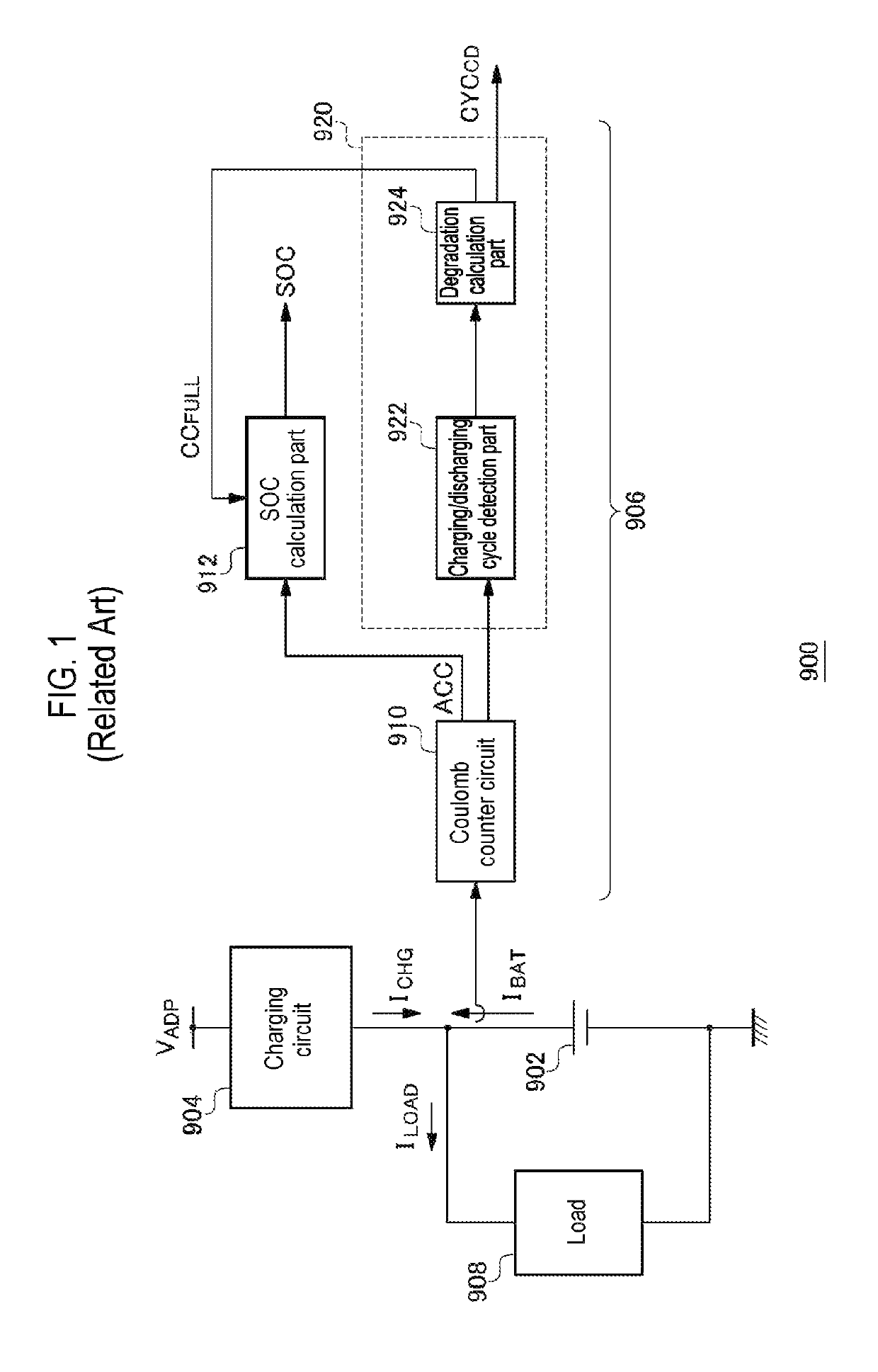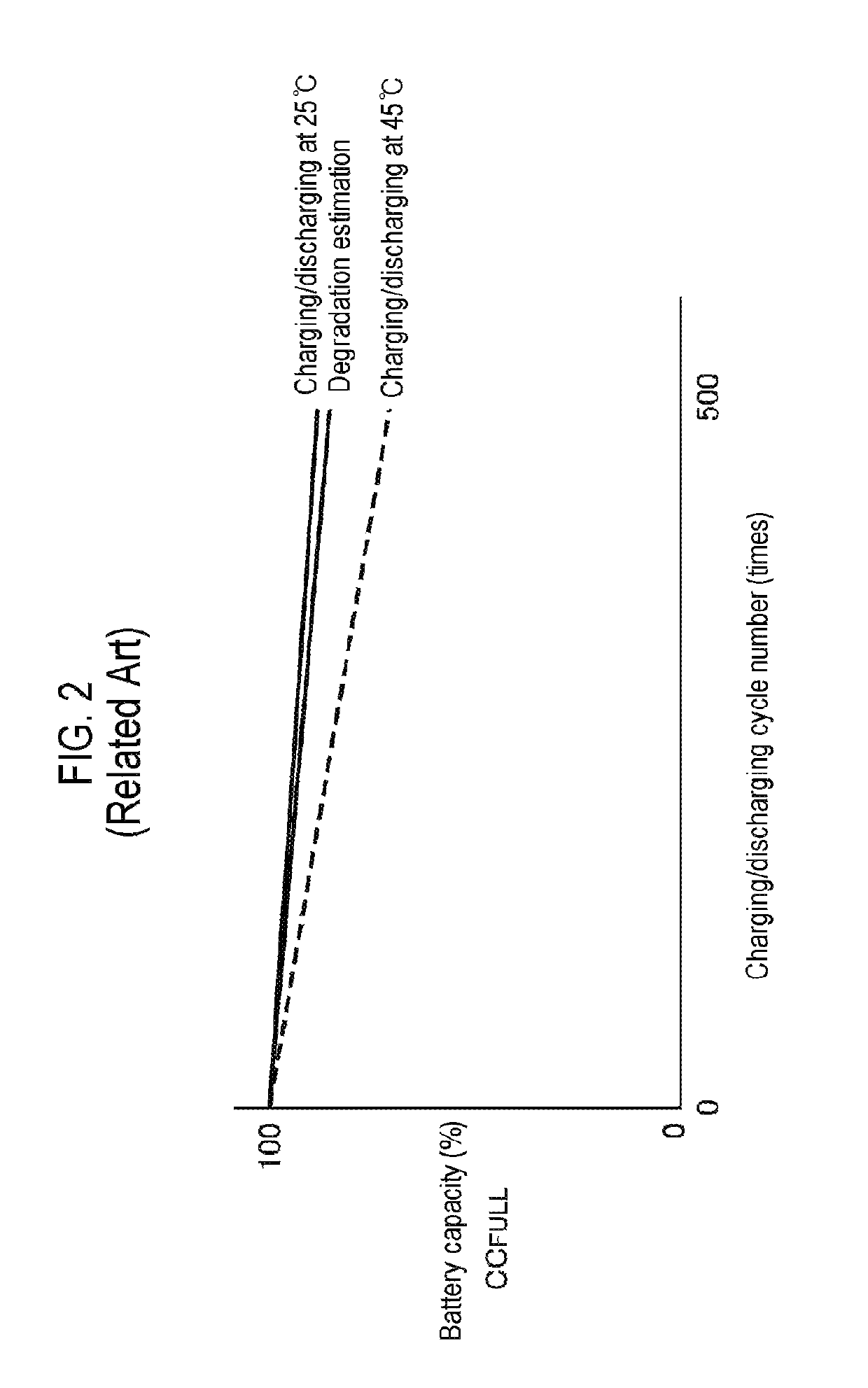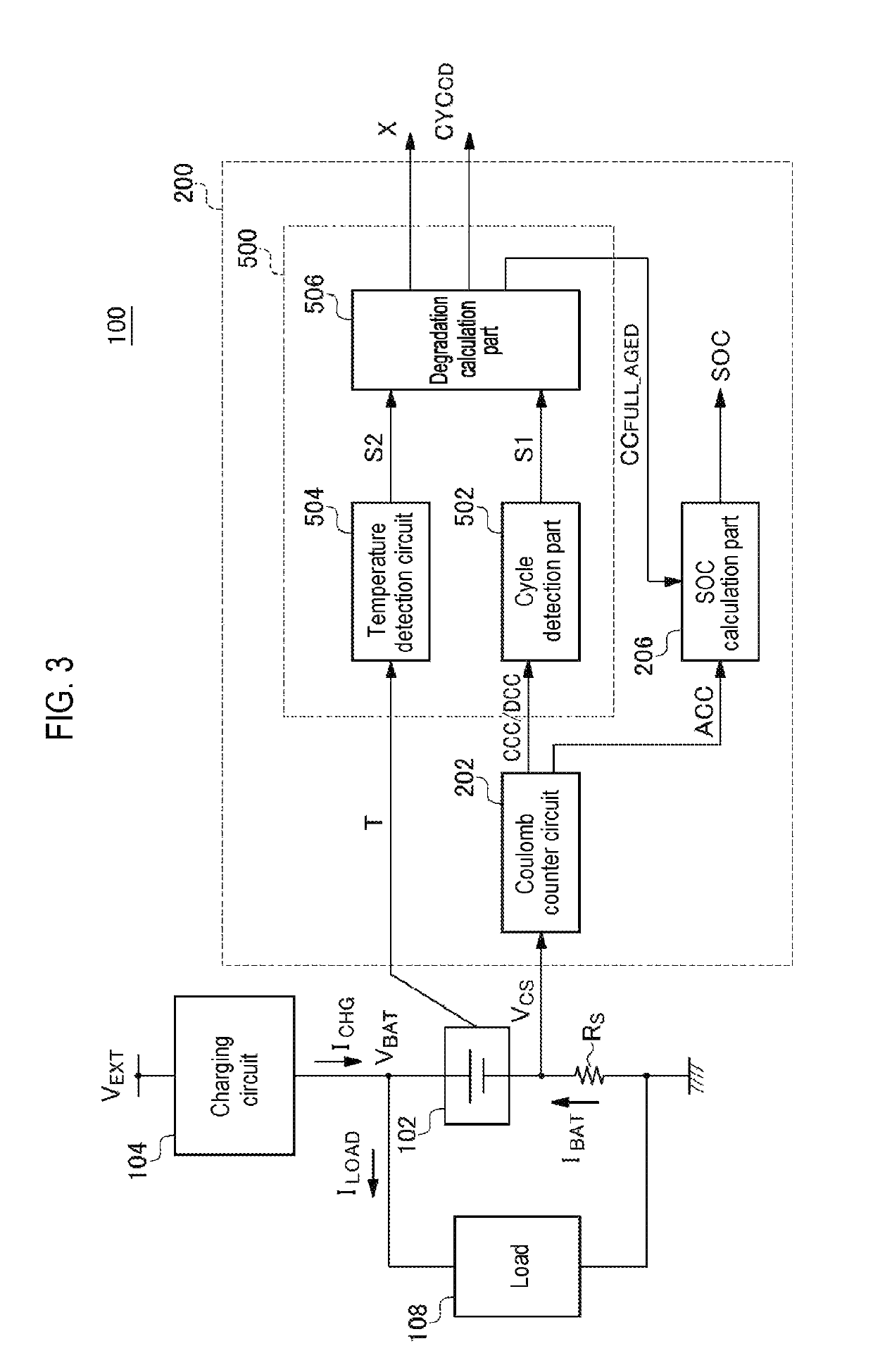Method for estimating degradation of rechargeable battery, degradation estimation circuit, electronic apparatus and vehicle including same
a rechargeable battery and degradation estimation technology, applied in the field of battery management system, can solve the problems of increasing degradation estimation error and inability to accurately measure the ocv during the charging/discharging of the battery, and achieve the effect of high accuracy
- Summary
- Abstract
- Description
- Claims
- Application Information
AI Technical Summary
Benefits of technology
Problems solved by technology
Method used
Image
Examples
first embodiment
(First Embodiment)
[0057]FIG. 3 is a block diagram of a battery management system 100 including a degradation estimation circuit 500 according to a first embodiment. The battery management system 100 includes a battery 102, a charging circuit 104, a load 108 and a residual capacity detection circuit (fuel gauge IC) 200. The battery 102 includes one or more cells. Examples of cells may include, but are not limited to, a lithium ion cell, a lithium air cell, a lithium metal-based cell, a nickel-hydrogen cell, a nickel-cadmium cell, a nickel-zinc cell and the like. Although depending on applications of the battery management system 100, the number of cells is one to several for portable electronic devices and several tens to several hundred for vehicle batteries, industrial equipment and industrial machines.
[0058]A battery voltage VBAT is supplied from the battery 102 to the load 108. The type of the load 108 is not particularly limited. For example, when the battery management system 1...
second embodiment
(Second Embodiment)
[0091]FIG. 7 is a block diagram of a battery management system 100a including a degradation estimation circuit 500a according to a second embodiment. In the degradation estimation circuit 500a, a SOC determined by the SOC calculation part 206 is input to a degradation calculation part 506a. Then, the SOC of the battery is reflected in the variation ΔX of the degradation cycle number X. In general, it is known that degradation progresses faster in a larger SOC region than in a smaller SOC region. Thus, by adjusting the variation ΔX in response to the SOC, it is possible to increase the accuracy of estimation of the state of degradation.
[0092]When ΔX is described in equation (1), the SOC may be reflected in the parameter K. For example, the SOC of the battery 102 is divided into a plurality of ranges. Here, for the purpose of easy understanding and concise explanation, it is assumed that the SOC is divided into two ranges, i.e., an upper range (i.e., 50 to 100%) hig...
third embodiment
(Third Embodiment)
[0106]FIG. 10 is a block diagram of a battery management system 100b including a degradation estimation circuit 500b according to a third embodiment. The degradation estimation circuit 500b further includes a cycle time measurement part508 which measures a cycle time tCYC required for each charging / discharging cycle. The variation ΔX depends on the length of the cycle time tCYC.
[0107]For example, the cycle time tCYC is divided into a plurality of ranges. Here, for the purpose of easy understanding and concise explanation, it is assumed that the cycle time tCYC is divided into two ranges, i.e., a first range (tCYC>tTH) longer than a predetermined threshold tTH and a second range (tCYCTH) shorter than the predetermined threshold tTH. However, the value of the threshold tTH and the number of ranges are not particularly limited. In addition, the parameter K in equation (1) has different values for different ranges of the cycle time tCYC.
K=γ1 for tTH>tCYC
K=γ2 for tC...
PUM
 Login to View More
Login to View More Abstract
Description
Claims
Application Information
 Login to View More
Login to View More - R&D
- Intellectual Property
- Life Sciences
- Materials
- Tech Scout
- Unparalleled Data Quality
- Higher Quality Content
- 60% Fewer Hallucinations
Browse by: Latest US Patents, China's latest patents, Technical Efficacy Thesaurus, Application Domain, Technology Topic, Popular Technical Reports.
© 2025 PatSnap. All rights reserved.Legal|Privacy policy|Modern Slavery Act Transparency Statement|Sitemap|About US| Contact US: help@patsnap.com



